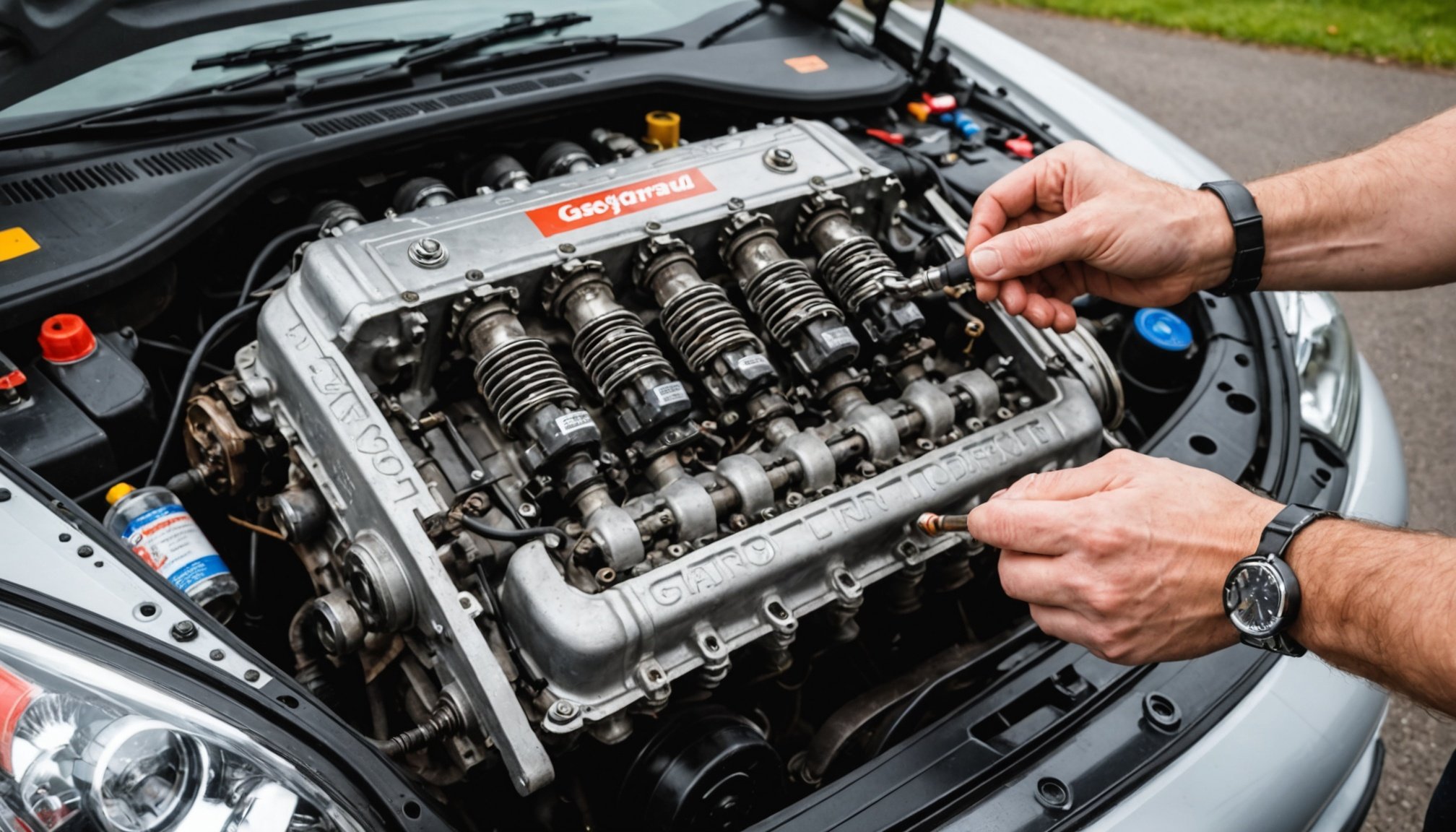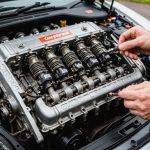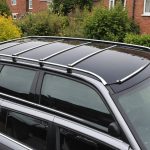Safety Precautions
When undertaking car maintenance, ensuring safety is of paramount importance. One of the most vital safety tips for car maintenance involves the use of Personal Protective Equipment (PPE). Wear items such as gloves and safety goggles. They protect against harmful chemicals and debris. This is especially crucial during tasks like replacing spark plugs, where unexpected hazards might arise.
Working in a well-ventilated area is another critical precaution. Ensure the space is free from toxic fumes that can accumulate while performing maintenance. Ventilation reduces risks associated with prolonged exposure to vehicle exhausts or chemical fumes.
In the same genre : Ultimate guide to installing a remote start system in your uk vehicle: beat the chill on frosty mornings!
Lastly, be aware of common hazards when replacing spark plugs. Always ensure the engine is completely cool before starting. A hot engine poses risks of burns. Ensure proper handling of tools to prevent accidental cross-threading, a common hazard that can cause significant engine head damage. By following these essential safety tips, you can perform maintenance tasks efficiently and safely.
Tools and Materials Required
When addressing automotive repair tools, it’s crucial to gather the right equipment for efficient car maintenance. Tools like a spark plug socket, ratchet, and torque wrench are essential for tasks such as spark plug replacement. Opting for quality brands, such as Snap-on or Craftsman, ensures durability and precision. Safe handling of tools is paramount; always store them in a clean, dry area to maintain performance and prevent corrosion. Regular inspections for wear and tear should be part of your routine.
Topic to read : Ultimate diy handbook: installing an aftermarket sunroof in your uk vehicle
In addition to tools, various materials serve as safeguards for the aluminium engine head during maintenance. Protective measures, such as using anti-seize compounds or dielectric grease, can prevent thread damage and ensure a smooth installation process. Utilize high-temperature sealing materials to further protect the engine from potential leaks or contaminations, which could lead to costly repairs.
When it comes to handling these tools and materials, following best practices is essential. Proper technique not only ensures safety but also efficiency in completing maintenance tasks, reducing the risk of user error, and prolonging the lifespan of your car components.
Step-by-Step Guide to Replacing Spark Plugs
Navigating a spark plug replacement guide requires precision and attention to detail.
Preparing the Workspace
To enhance efficiency, organize your workspace. Arrange all tools and materials before initiating the process. Ensure the vehicle is parked on a flat surface and turned off. Disconnect the battery for added safety, ensuring no accidental starts during the procedure.
Removing Old Spark Plugs
Use a spark plug socket to gently loosen the plugs. If they resist, apply penetrating oil to ease removal. Avoid forcing plugs, as this could damage threads. If issues persist, consult a professional to prevent harm to the engine head.
Installing New Spark Plugs
For a proper installation, hand-tighten new plugs before using a torque wrench. Ensure even torque across all plugs to prevent leaks and performance issues. Be vigilant to avoid cross-threading, an error that can be costly and time-consuming to rectify. Tighten to manufacturer specifications, ensuring optimal engine performance.
This spark plug replacement guide ensures a seamless transition from old to new plugs, safeguarding engine health and optimizing vehicle function. Following these detailed steps minimizes risks and promotes sustainable maintenance practices.
Safeguarding the Aluminium Engine Head
Taking steps to protect your engine head is crucial during the spark plug replacement process, as it prevents long-term damage and ensures optimal vehicle function.
Using Protective Barriers
To mitigate risks, consider using protective barriers like towels or cloths around the engine head. These barriers shield sensitive components from accidental tool drops or debris exposure. When working on or near the aluminium engine head, take care to position these barriers securely without obstructing your work area.
Preventing Contamination
Maintaining cleanliness is imperative to avoiding contamination. Ensure your workspace is clear of dust, oil, and any other particles that could inadvertently enter the engine. Before starting, wipe down the engine and surrounding areas. During the process, use clean gloves and tools to minimise the risk of introducing contaminants that could affect engine performance. After replacement, check the work area again to confirm it is debris-free.
Identifying Common Issues
Be vigilant for signs of potential engine head issues. If you notice irregularities such as misaligned spark plugs or metal shavings, take immediate action to address them. Identifying and resolving these problems early prevents further engine damage and costly repairs.
Troubleshooting Common Problems
When executing a spark plug replacement, encountering issues can be frustrating but not uncommon. To successfully troubleshoot these challenges, it’s crucial to follow a systematic approach.
Diagnosing Misfiring or Performance Issues
If performance falls short post-replacement, misfiring might be the cause. First, ensure that the spark plugs are properly torqued and connected. Misfires often result from faulty installations or incompatible spark plugs that fail to engage with the ignition system effectively.
Addressing Leaks and Retaining Vacuum Seals
Leaks can compromise engine performance significantly. Check the rubber gaskets and seals for wear or improper fit during reassembly. Ensuring a tight fit for all components helps maintain necessary pressure levels, securing engine efficiency.
Techniques for Rectifying Installation Errors
Cross-threading during installation is a frequent issue. If the plug feels forced during tightening, stop and re-evaluate the alignment. Using a thread chaser can help repair damaged threads, while anti-seize compounds reduce future misalignment risks.
Employing these troubleshooting techniques not only addresses immediate problems but also enhances ongoing vehicle maintenance practices.
Additional Resources
Accessing quality automotive maintenance resources can greatly enhance your knowledge and skills. Well-curated content aids both novices and experienced individuals in tackling diverse repair challenges.
Further Reading
Engaging in further reading offers profound insights into advanced DIY automotive projects. Articles and tutorials from reputable sources provide comprehensive guidance, elevating your understanding of complex repairs. These resources delve into various automotive systems, offering detailed explanations and strategies to address challenges effectively.
Video Guides
Video tutorials serve as invaluable learning tools by visually demonstrating procedures. For optimal learning, rely on reputable sources that ensure accuracy and clarity in their presentations. These guides break down intricate processes into manageable steps, fostering a better grasp of automotive repairs. Visual demonstrations help you avoid common pitfalls and improve your technique.
Product Recommendations
Navigating the vast market of automotive products can be daunting. Trustworthy suppliers and online stores offer suggested products that meet high standards of durability and performance. These recommended tools and materials align with industry specifications, ensuring top-notch outcomes in your maintenance tasks. Leveraging expert suggestions simplifies your purchasing decisions, aligning them with your specific needs.











